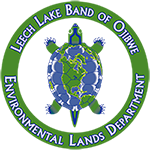 Algae
Algae
Algae are essential to all lakes
At the base of the food-web, algae directly or indirectly support the whole biological community in your lake. Algae are essential to a healthy fishery and the overall health of lakes. There are many species of algae that occur in lakes. The type of algae and their populations within a given lake reflect the available nutrients, water clarity, temperature, acidity, time of the year and abundance of grazers that eat algae.
Too Many Algae Can Cause Problems
In large numbers, algae can affect people’s enjoyment of lakes, the taste and odor or drinking water drawn from surface waters, and health of aquatic plants, fish, and other animals. Many of us have experienced an over-abundance of algae (often called “blooms”) either as mats of algae that can cover a lake or “pea soup” green water that occurs on calm days in the heat of summer; followed by the odor that arises as the algae die and decompose. On rare occasions, blue–green algae blooms can produce toxins that are harmful to mammals, including cattle, dogs and humans. Blue-green algae can irritate the skin, eyes, nasal passages, cause sickness or even death. If humans or pets come in contact with blue-green algae, wash thoroughly as soon as possible and prevent pets from licking algae off their fur.
Which Algae are Blooming?
Most algae are microscopic and require professionals for their identification. However, large colonies are visible during a bloom, and the general nature of the bloom can give us clues about which type of algae is blooming (identification by professionals is still advised). A green mat on the surface that has a rope like texture may be green algae. A bright green layer of algae on the surface that has a slimy texture may be blue-green algae. If the green layer of the surface is made up of small floating leaves, it is not algae, but rather an aquatic plant called Duck Weed.
What Causes Algae Blooms?
Turn up the water temperature and add some phosphorous and you have the perfect recipe for algae soup! Algae blooms occur when the water is warm and clam, when nutrients are plentiful, and/or when grazers that eat algae are few. Small fish and zoo-plankton are the most common grazers of algae.
The small amount of phosphorous that naturally occurs in our lakes is usually insufficient to support large algae blooms. However, phosphorous entering our lakes from the surrounding watershed (the area of land that drains to a lake or stream) or re-suspension of phosphorous that has settled on the lake bottom will fuel algae blooms. Under optimal conditions, the addition of only one pound of phosphorous can promote the growth of 500 pounds of algae!
Fishing pressure on a lake can add to the problem. The saying, "tug on one part of the food-web and you'll affect all the other parts" holds true. Removal of too many Northern Pike, Walleye, Bass or other game fish from a lake can affect the population of small fish and other grazers, and ultimately lead to a greater abundance of algae.
What Can I Do to Prevent or Control Algae Blooms on My Lake?
The most cost effective strategies for long-term results involve the reduction of phosphorous inputs to a lake. Phosphorous commonly enters a lake attached to soil particles, dissolved in run-off, in seepage from failing septic systems, and through re-suspension of lake-bottom sediments. Watershed strategies to filter , trap , and contain phosphorous include maintaining septic systems, planting vegetative buffers along streams and lakes, and re-routing run-off rain gardens and storm water ponds. In-lake strategies to reduce phosphorous re-suspension include maintaining or restoring native aquatic plan populations, removing / controlling carp if they exist in your lake, reducing the speed of motor boats and personal watercraft in shallow water, and minimizing other activities that "stir up" the sediments in the lake.
![]()
Soruce: University of Minnesota Extension's Lake Home and Cabin Kit.
Contact Us
(218) 335-7400 DRM
| Name | Title | Phone |
|---|---|---|
| Brown, Levi | Environmental Director | 335-7417 |
| Harper, Jeff | Water Resources Program Manager | 335-7415 |















 Division of Resource Management
Division of Resource Management